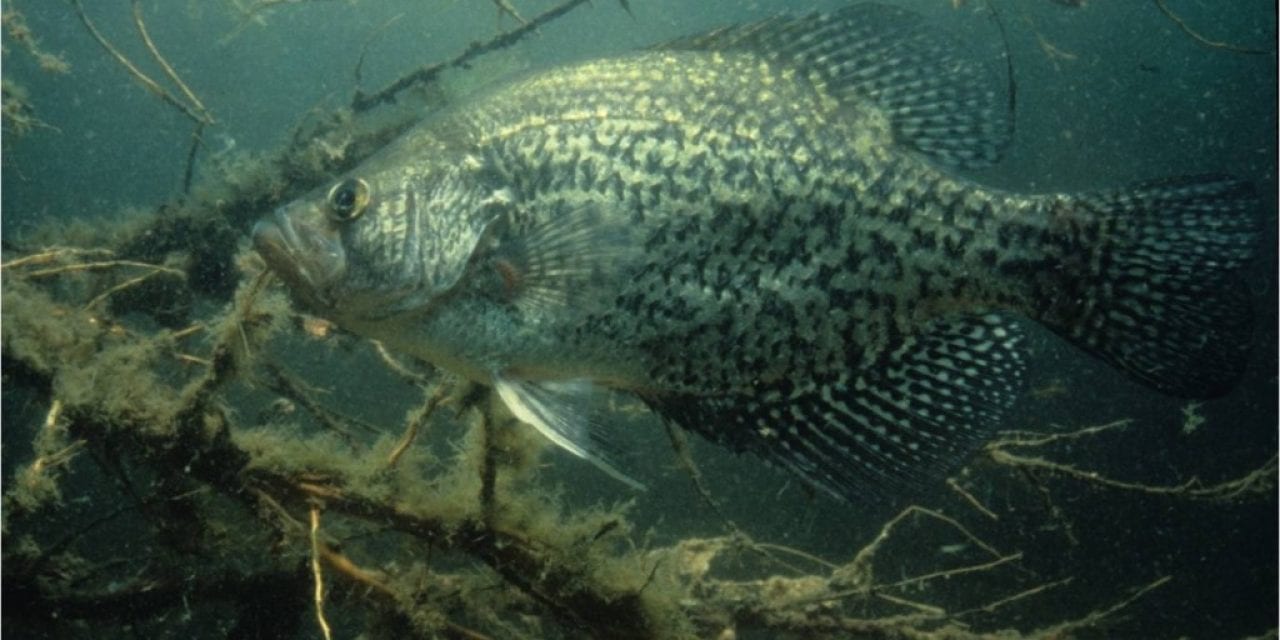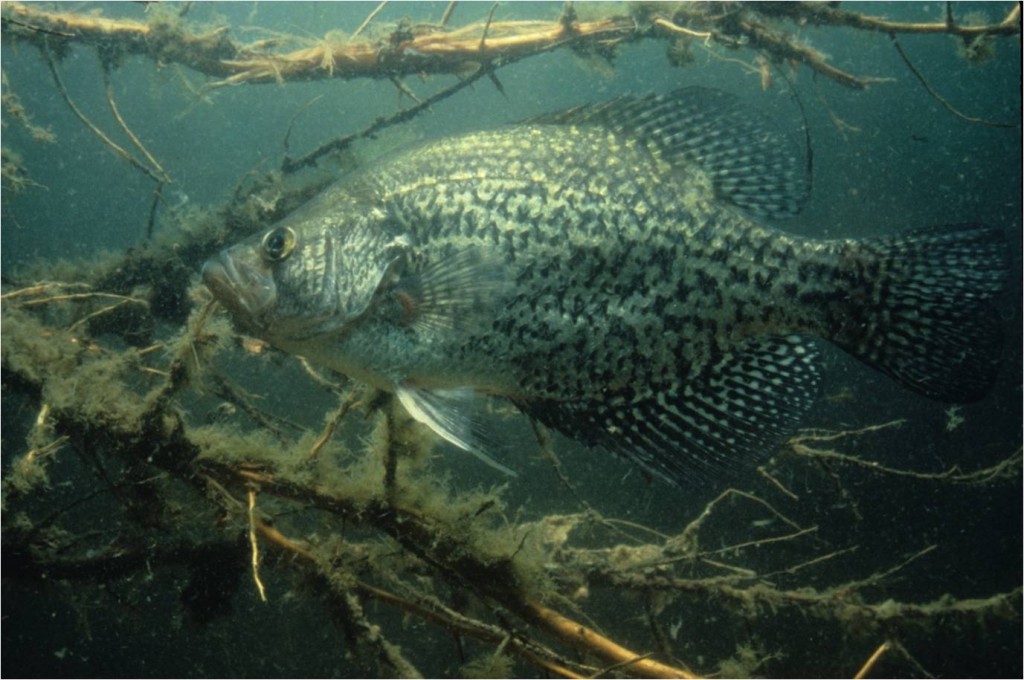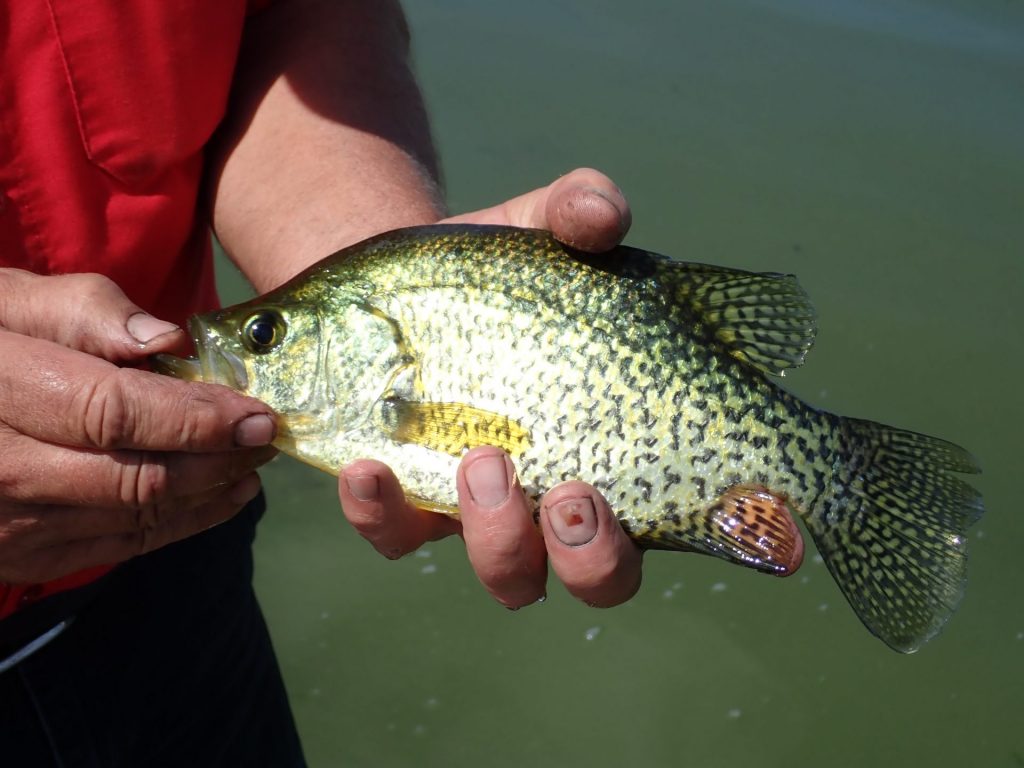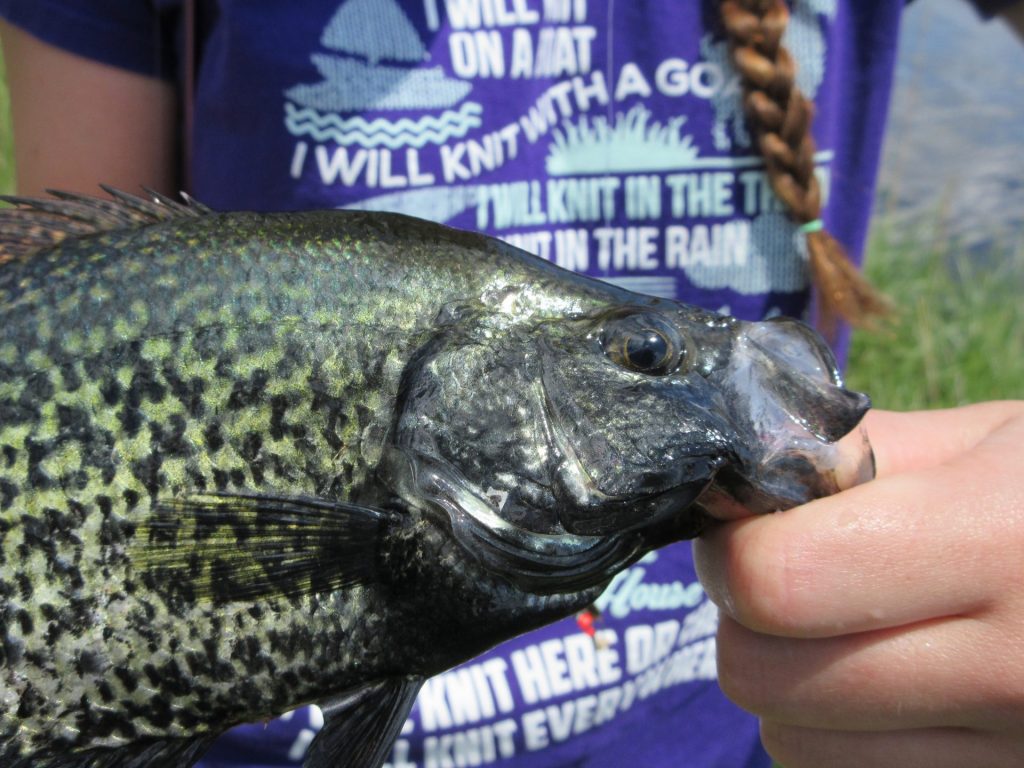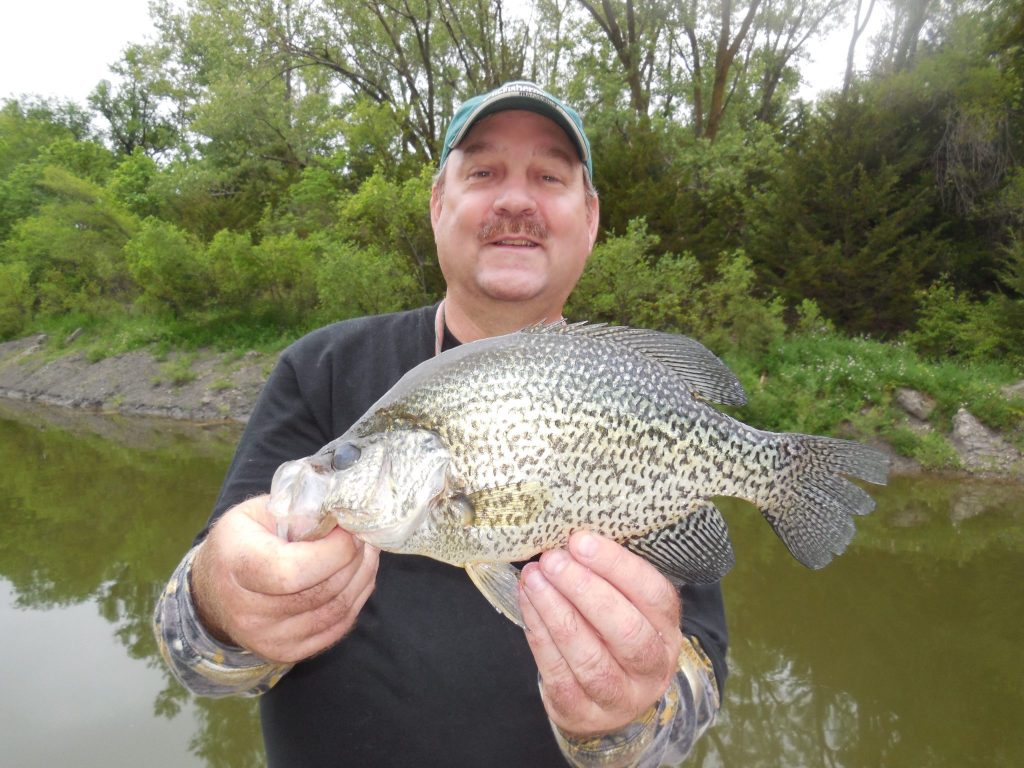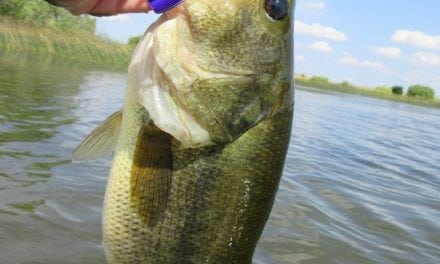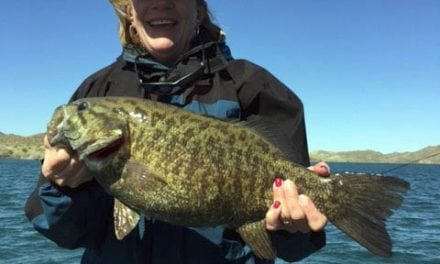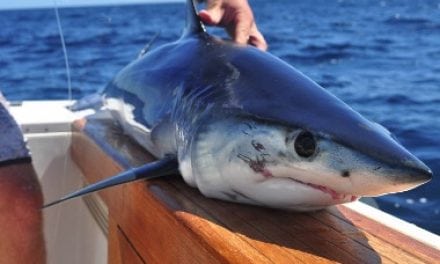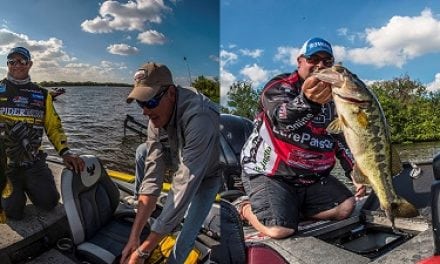If you blog about the outdoors, fish and fishing, subject matter is seasonal. Same time every year the same subjects are relevant and I will probably blog about them in some form. I hope people do not mind “re-runs”, but I am betting most will not remember, and there are a bunch of new readers. I re-ran one last week, got another here. . . .
As soon as we have some nice weather this time of year, everyone wants to fish! Folks who only fish a time or two each year, are going to fish on a nice spring afternoon. Many of those anglers will have one thing on their mind–CRAPPIES!
There are a lot of misconceptions about crappies this time of year. So, let me modify and re-use a blog post from a few years ago. The more you understand about the fish you pursue, the more you will catch!
There is no doubt that the fish species that can send the largest masses of anglers to the banks during the spring fishing fever would be crappies. Everyone loves to sit on a shoreline on a warm afternoon and experience a good crappie bite. On the other hand, with schizophrenic weather changes, I can think of no other species of fish that can be more frustrating than spring crappies. Consistently successful anglers are always adapting and adjusting. What can you do to maximize the number of spring days you catch crappies?
You Can Start Early
Given some warming weather, crappies may move shallow right after ice out. Those early movements are NOT spawning-related! However, in some habitats, including many Nebraska waters, the crappies may use the same areas for spawning later. Early movements are driven by feeding–predator/prey dynamics drive the aquatic food chain. Understanding those relationships is crucial for successful angling.
At ice-out the aquatic food chain will become most active in areas where the water may warm a few degrees. Regardless of the species you pursue in the spring, especially early spring, think warm.
Crappies love protected habitats, bays, coves, corners, and similar areas that are protected from the wind, especially cold north and northwest winds. Find cover of some type in those protected, warming areas, emergent vegetation, stalks of last summer’s submerged vegetation, brushpiles, fallen trees, beaver lodges, and you likely will find some early spring crappies. Rocks and rocky habitats can hold fish too, but on many Nebraska reservoirs those rocky habitats will hold more crappies later in the spring after the water has warmed even more.
Where’d They Go?
Of course Nebraska springs are all sunny, warm, clear blue skies, tweeting birds, and shallow, biting crappies. . . .
Right.
It can be like that on a warm spell, while the weather is nice. But, there will be about four dozen extreme weather swings during the “typical” Nebraska spring. Fish for crappies on a beautiful spring afternoon and everything can be grand. Go back the next day when the wind is blowing and it is spitting snow flakes, and you will be lucky to dry off one crappie.
In some cases, especially in the short-term, those crappies may be in the same location, just tucked deeper into cover. However, it is more likely that they drifted back towards deeper water. Depending on where they started, how shallow they were, and the severity of the weather change, they may not have moved far, maybe just a few yards. Or, they may have moved hundreds of yards back to the relative stability of deeper water.
If you are on a boat of some kind equipped with the latest electronic technology, you might be able to follow the crappies into nearby deep water. They often suspend there. Your electronics will show you they are there.
When you find crappies in deeper water, think “ice fishing”. If those crappies moved out of the shallows with the weather change they very likely will not be as active or as easy to catch. Vertical presentations right on their head will probably be the best way to scratch a few fish–just like when you are fishing through a hole in the ice.
As spring progresses and the water becomes warmer and the weather more stable, the wild shifts in crappie location and feeding attitude will become less and less. Pick your days and fish when the crappies are most likely to be shallow and catchable. Or, follow the movements and catch fish even when the weather changes–whatever strategy works for you.
K.I.S.S.
Presentations for spring crappies can be, should be, relatively simple. Follow the K.I.S.S. principle–Keep It Simple, “Stupid”.
Have you ever watched crappies in an aquarium? Watch close when a couple dozen minnows are dropped in the tank. Other species, even bluegills, likely will race around chasing minnows. Crappies are much more likely to take their time, slowly, patiently moving into position, “sneaking” on a minnow. They maneuver into a position where prey is not likely to escape; slurp, minnow chowed. I hate giving human traits to animals, but the crappie feeding strategy is often, “Don’t mind me Mr. Minnow, I’m just a friendly, harmless ole crappie drifting around here enjoying the day. No threat at all, just chilling, looking at all the other groovy fish.” Gulp, minnow gone.
Sure, crappies can and will chase prey, and at times they can be quite aggressive. But, much of the time they are a lot more laid back, a lot more mellow. Even though their intent is just as deadly as a muskellunge or flathead catfish, their feeding strategy is completely different. Remember that and you will catch more crappies at all times of year. Slow and steady, nothing fancy, nothing too aggressive is usually best for crappies, especially in the cold water of early spring. Put a bait in their vicinity, keep it there and give them a chance to move in and eat it.
Where allowed nothing is simpler than a plain ole bobber, a split shot, light wire hook, and a small, lively minnow. Dabble that in front of a crappie most anytime and they will eat–preator/prey dynamics at its simplest and rawest. I like light wire hooks because they keep minnows lively, and even with 8-pound test line you can usually straighten the hook when you get snagged in the woody cover you likely will be fishing. I favor Tru-Turn hooks myself. Hook the minnows through the back, just under the dorsal fin.
Use floats, “bobbers”, only as large as needed to suspend the bait. You want to know when you have a bite, when a crappie sucks in the bait, you wanna know, now! Bobbers that are too big inhibit bite detection and result in less fish caught. Rigging up the kids with beach-ball bobbers way too large is one of my pet peeves–don’t do it!
You do not have to cast a mile! In fact if you are in good crappie habitat, dipping and dabbling will likely catch more fish than casting. Cane poles are still wonderful tools for catching fish in some situations–like crappies in the spring!
Live baitfish are prohibited on the water you are fishing? Don’t mean nothing, don’t need no stinkin’ minnows!
There are about 1.6 million different varieties of crappie jigs, pick your favorite, use it. A selection of 1/64 to 1/8 ounce jigheads and a variety of plastic bodies will give you the tools you need in an infinite variety of shapes, sizes and colors. Tube bodies work very well, but there are a variety of other plastic bodies that work great for crappies too. Recently, these have been one of my favorites, Tiny Assasin, and I love boot-tail, shad body plastics too. Oh, crappies still love those old marabou jigs too!
If your confidence needs something that smells like a real minnow or something the crappies naturally eat, get some of these, Gulp! 1-inch minnows. And, do not forget that wax-worms ain’t just for ice-fishing!
Jigs are meant to be cast and retrieved, but remember that slow and steady is usually best for crappies, especially in the spring. Bobbers are not just for fishing live bait! Attach an appropriate size float on your line at the depth you want to fish and you can fish a jig slower, a lot slower if you have to.
There are a variety of jigs with spinners attached and those are great baits for crappies. On a day when the fish seem to be active and you want to cover some water, they may work great and catch you more fish, but during spring do not be surprised if slower and simpler, plain ole jigs work better.
The Spawn
I said earlier that in some Nebraska waters the crappies will use some of the same habitats in early spring that they will use later when they are actually spawning. The spring crappie bite can be very good weeks before the fish are actually thinking about nesting and spawning. That means when the fish are shallow, they may be in some of the same areas over a couple of months. As they get closer to actual spawning the fish, males especially, will become darker colored. Even white crappie males can be very dark during the spawn.
The bite will slow and become more technical as the fish get closer to spawning. Male crappies will select small territories, build and defend their “nests”. Nests are often located next to shallow water cover objects. When spawning behavior starts, male crappies stay close to their nests and will not move far to take baits. You again will discover that you have to fish slow and put baits right on the crappies to get them to bite. Female crappies may stage close by until they are actually ready to move onto a nest and deposit eggs; they too tend to have something other than feeding on their mind during the spawn.
Once the spawn is over, crappies tend to disperse and head towards more open waters. Depending on the water body, available habitat, and prey, they may venture to emerging beds of aquatic vegetation, wander in the “middle” of the “lake”, or utilize some other type of deeper water habitat. Some crappies will remain in shallow cover year-round, but for the most part, crappies become a lot harder to catch as they disperse and roam open-water. The abundance of prey present during the summer also makes them harder to catch. Crappies can still be caught during the summer, but the fishing is usually not as easy as it was during those warm, spring days when everyone wants to go crappie fishing. Many anglers will choose to pursue other species after the crappies finish spawning, and wait for the shallow-water bite again next spring.
Catch & Release, For Crappies?
Crappies certainly are a prolific panfish species in most Nebraska waters and can withstand some harvest. Anglers should take some crappies home to eat; they taste really good and are good for you! However, big fish are hard to catch not because they are so smart, but because they are so rare.
Panfish populations absolutely can be over-fished and that is exhibited in many populations where no panfish reach large size. Yes, there are a host of factors that influence crappie growth rates, life span, and potential size, but it is a sure bet that a big crappie in Nebraska, a fish 12 inches and larger, is a rare fish. Plan to harvest a mess of 10-inch crappies for a meal of fresh fish, but if you catch some slabs, some crappies as big as trash can lids, take some pictures and turn ’em loose. Your fishing and my fishing will be better if you do.
The post It is Spring and Crappies Are on the Mind appeared first on Nebraskaland Magazine.

